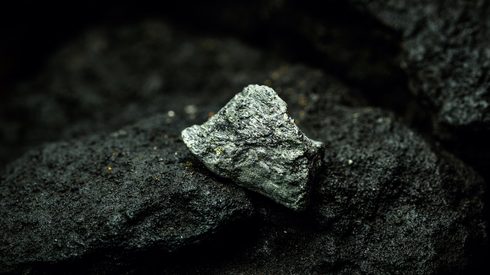Fastmarkets’ weekly price assessment for tungsten concentrate 65% WO3, in-whs China was 129,500-132,000 yuan ($17,900-18,245) per tonne on Wednesday April 10, up by 2,500-3,500 yuan per tonne from 127,000-128,500 yuan per tonne the assessment prior.
The latest assessed price represents a ten-year high, up by 0.78% from 127,000-130,000 yuan per tonne on December 11 2013.
China tungsten production reduction
China was the world’s largest tungsten producer, accounting for approximately 80% total global tungsten production in 2023, sources said.
Despite this, according to the latest data from the United States Geological Survey (USGS), China produced approximately 63,000 tonnes of tungsten in 2023, down by 4.55% from roughly 65,867 tonnes in 2022.
“The production reduction has led to the tightness currently seen in the Chinese spot tungsten market, which has been a support for domestic upstream tungsten concentrates and ammonium paratungstate (APT) prices since November,” a China-based tungsten producer source said.
In addition, on March 18, China’s Ministry of Natural Resources announced that the mining quota of 2024’s first batch of tungsten ore (tungsten trioxide content 65%) was 62,000 tonnes, down by 1,000 tonnes, or 1.59%, from 2023’s first batch quota of 63,000 tonnes of tungsten ore (65% WO3).
The 2024 first batch mining quota in Heilongjiang dropped by 800 tonnes, while that of Zhejiang and Anhui provinces decreased by 100 tonnes, compared with the first batch quota for 2023.
“The announced mining quota for 2024’s first batch of tungsten ore has declined since 2020,” a second China-based tungsten producer source said. “Many market participants anticipated that tungsten production in 2024 will continue to be tight since the overseas tungsten production will be quite hard to fill the gap.”
Stricter environmental supervision in tungsten mining areas
On March 22, China’s Ministry of Natural Resources announced that it would conduct inspections in mining areas in 2024; mineral producers would need to rectify any issues found in spot checks to meet environmental protection standards, sources said.
“The environmental protection inspections across mining areas in Jiangxi and Hunan provinces, two major tungsten production hubs in China, caused some production cuts among some tungsten concentrate producers and smelters,” a China-based tungsten trader source said.
Any issues found in the spot checks that have not been rectified according to standards of environmental supervision, China’s Ministry of Natural Resources will urge the relevant provincial natural resources authorities to organize investigation procedures and rectification. Should any mines fail to rectify specified instances of noncompliance, the enforcement authorities will file a case for investigation and give severe punishments to them, sources told Fastmarkets.
“This time, the environmental supervision across mining areas is stricter, many tungsten concentrates producers and smelters have had to suspend their production to have facility maintenance checks to meet the standards of environmental supervision,” the China-based tungsten trader source said.
A fourth China-based tungsten trader added, “The production cuts due to environmental supervision will further make the spot availability tighter in 2024.”
Tungsten’s military applications
Because of its high melting point, tungsten can be used in a variety of military applications, namely the manufacture of tanks, armor-piercing bullets and aircraft engines, among others.
On November 30, the Ministry of National Security of China published an article in which it defined tungsten a critical material, sources said.
“As the world’s largest producer of tungsten, China has already imposed 20% tariffs on tungsten concentrates in 2022 and restricted the exports of tungsten to protect the domestic reserves,” a second tungsten trader said.
Regional tensions pushed up tungsten prices due to its status as a critical strategic material, sources said.
“With the world in increasing uncertainty, many buyers tend to purchase critical strategic materials like tungsten and rare earth to [hedge against risk],” the second tungsten trader said.
A third tungsten trader added, “Apart from the Russia-Ukraine war, the regional conflicts in mid-east are also ongoing. All the conflicts will consume large amounts of weapons, therefore, the need for tungsten remains very strong.”
Strong tungsten demand from photovoltaic and manufacturing industries
Tungsten concentrates is the key raw material of tungsten filament, which is a silicon wafer cutting tool in the photovoltaic industry.
In 2025, the total installed capacity of China’s photovoltaic industry is expected to reach 550GW, and the demand for tungsten filament will reach 334.99 million kilometers, according to market estimates by the Silicon Industry of China Nonferrous Metals Industry Association.
“The availability of tungsten concentrates are already in quite tight now, especially the good grade of tungsten concentrates. Such booming photovoltaic demand is very likely to continue to underpin the upstream tungsten concentrates market,” a fourth tungsten source said.
According to the latest data released by the China Federation of Logistics and Purchasing, the global manufacturing purchasing managers’ index (PMI)reached 50.3% in March, up by 1.2% month on month.
“The rise of PMI in March has showed the improved global trade in terms of rising orders in manufacturing sectors,” the fourth tungsten source said.
The recovering of manufacturing industries will lead to facilities renewal on a large scale, which will, to some, extent, increase the demand for hard alloys and other alloys, sources said.
“Tungsten is the key raw material to produce hard alloy thanks to high hardness and high durability. The rising demand for hard alloys will drive up the tungsten demand and prices,” a fifth tungsten source said.
Get access to all of our market-reflective metals prices and analysis to help you navigate volatile, opaque markets. Find out more.





